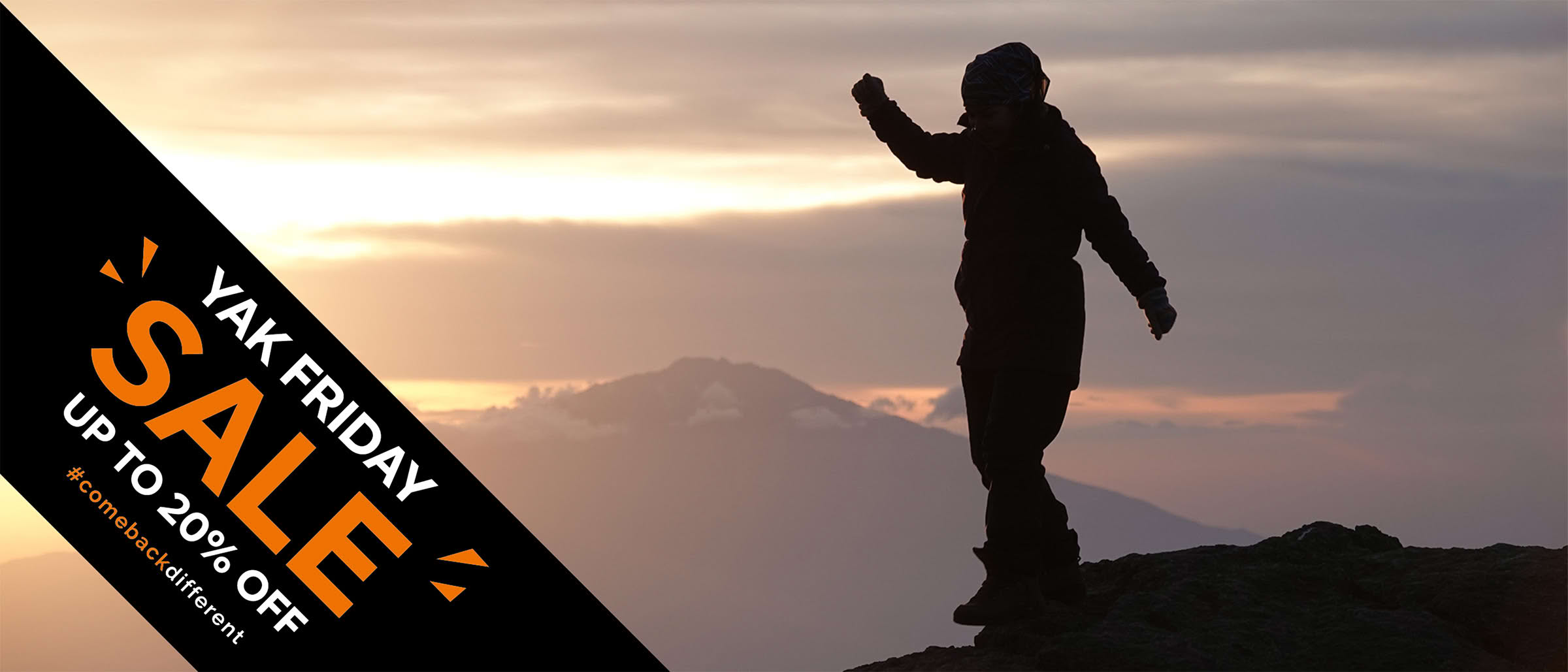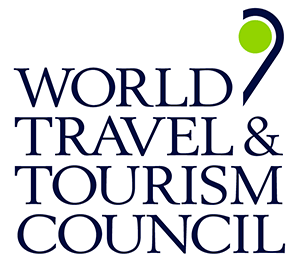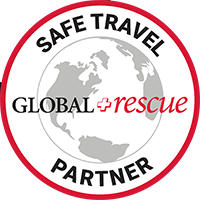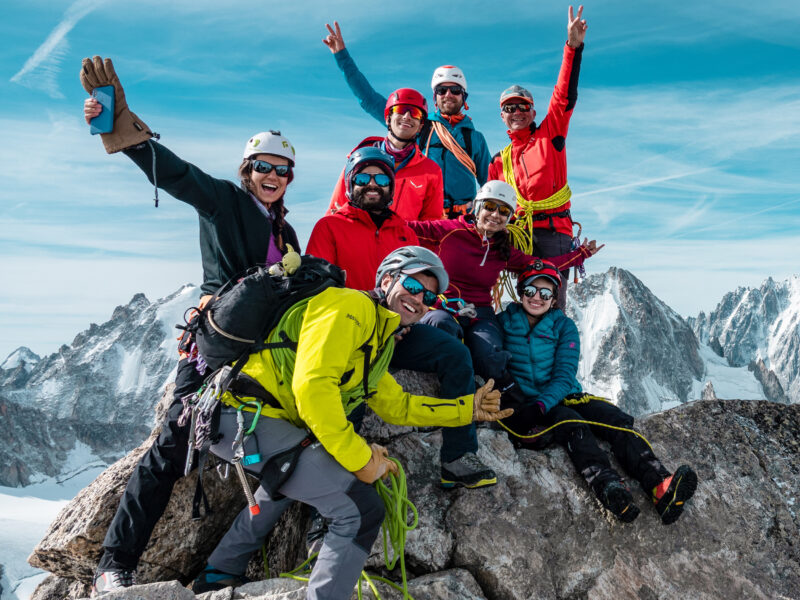BY Rami Rasamny | September 26 2025
Is Mont Blanc Difficult to Climb?
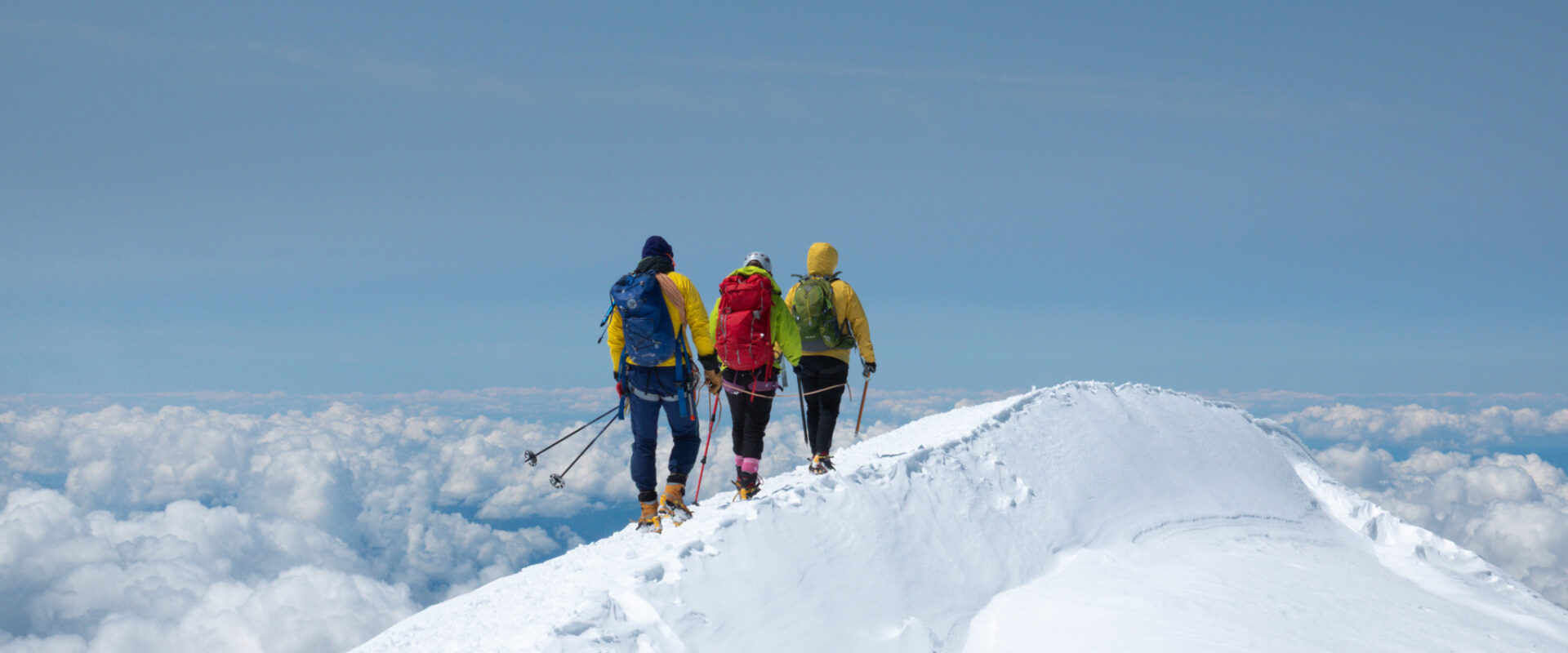
Mont Blanc rises to 4,810 meters, the highest peak in Western Europe and one of the most iconic summits in the world. But beyond its statistics and fame, Mont Blanc represents something far greater. It is a place where people push beyond their limits, discover their strength, and come back different. For many climbers, reaching its summit is a milestone moment that stays with them for life.
One of the most common questions we hear is: Is Mont Blanc hard to climb? The answer depends on preparation, skill, and mindset. This article focuses on the classic Gouter Route, the most popular and accessible way to climb Mont Blanc. While considered the easiest route, it remains a serious alpine challenge that requires commitment and preparation.
The Gouter Route: Mont Blanc’s Classic Ascent
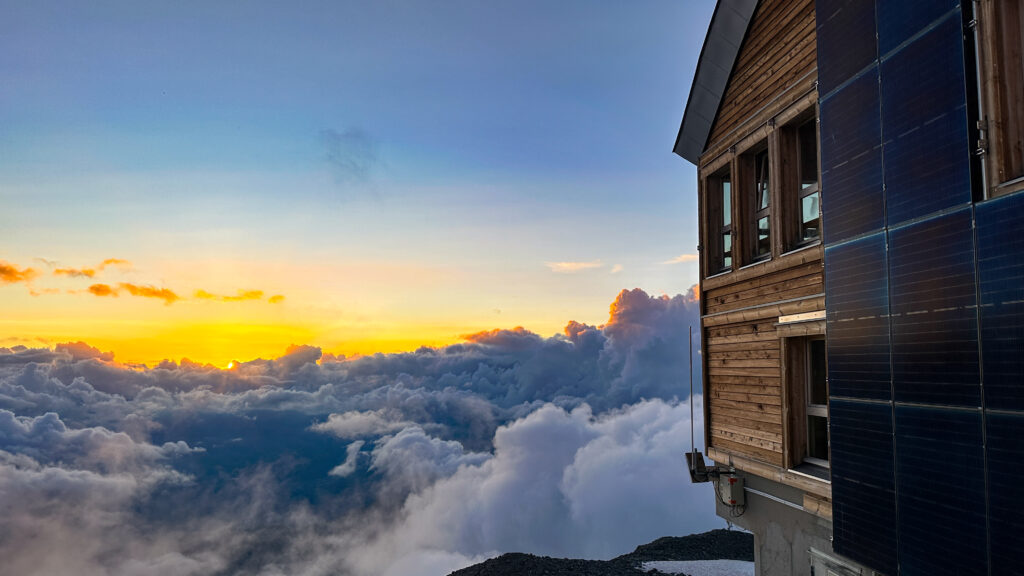
The Gouter Route is the most common way climbers experience a Mont Blanc guided climb. Over three days, you steadily make your way toward the summit in a way that balances effort, safety, and acclimatization.
The journey begins with a climb from the valley to the Tête Rousse Hut at 3,167 meters where you spend the night and prepare for the summit push. In the early hours of the next morning, you set out by headlamp, ascending from Tête Rousse to the Gouter Hut at 3,835 meters. This stretch involves a steep rocky section that requires balance, focus, and steady movement. From the Gouter Hut, you continue onto snow-covered slopes, eventually reaching the Bosses Ridge, a narrow and dramatic final approach to the summit. Standing on the top of Mont Blanc at 4,810 meters, you are rewarded with panoramic views of the Alps and an overwhelming sense of achievement. After a brief celebration, you descend back to the Gouter Hut for the night before making your way down to the valley the following day.
This structure breaks the climb into manageable stages, giving you the best possible chance to succeed while taking care of your body and mind.
Vertical Gain and Physical Demands
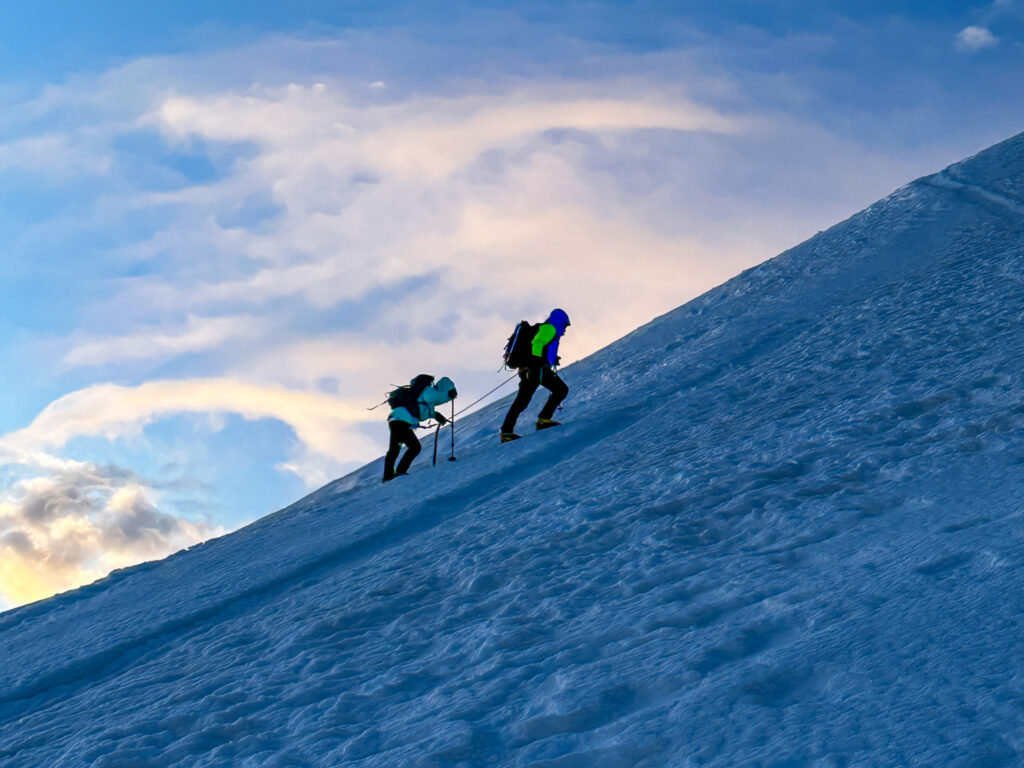
From Tête Rousse to the summit, climbers face a vertical gain of 1,650 meters or 5,413 feet. Summit day alone involves 10 to 12 hours of continuous climbing and descending at altitude, where every step becomes harder in the thin alpine air. It is a long and demanding day that tests your stamina, endurance, and determination.
Fitness Benchmarks
To prepare for a Mont Blanc climb, your training should aim to meet these benchmarks:
- Running: Comfortably complete 10 km in under 1 hour
- Cycling: Ride 40 km in under 90 minutes on varied terrain
- Swimming: Swim continuously for 30 minutes without stopping
These benchmarks reflect the aerobic fitness and strength required for summit day, where endurance matters as much as determination.
Technical Skills Required
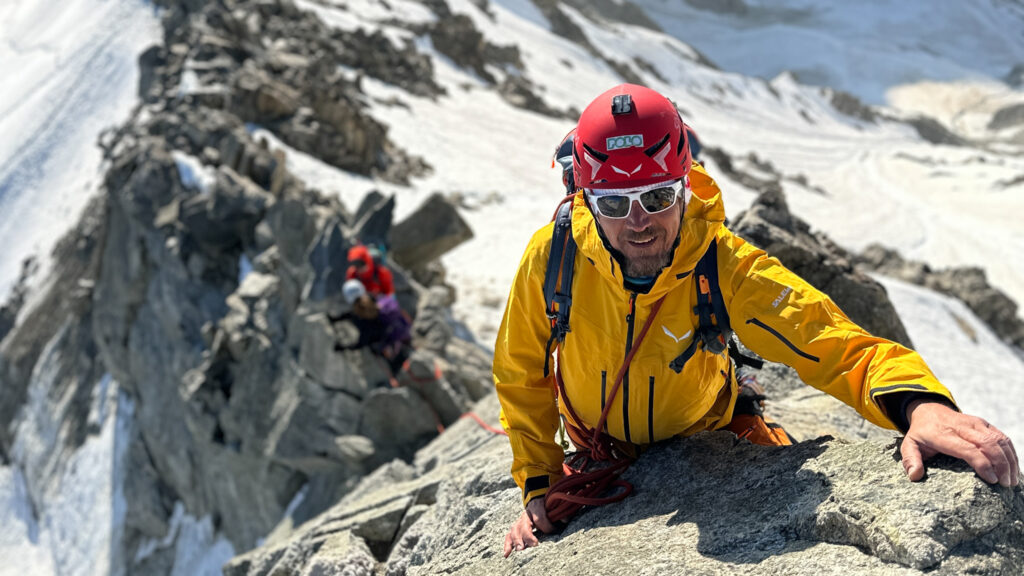
The Gouter Route does not involve advanced ice climbing, but it is far more than a simple trek. Climbers must move confidently on snow and ice while wearing crampons, use an ice axe for balance and self-arrest, manage ropes as part of a team for safety, and navigate rocky sections while wearing a harness.
Our Mont Blanc Summit Course is specifically designed to help you learn and refine these skills so you can approach the mountain with confidence and competence. These are the same skills that form the foundation for future alpine climbs, making this experience not only about summiting Mont Blanc but also about growing as a mountaineer.
Key Technical Sections
Certain parts of the route require focus and composure. The climb from Tête Rousse to the Gouter Hut involves a steep rocky scramble that can feel challenging, especially while wearing crampons and carrying a pack. Beyond the Gouter Hut, the terrain transitions to snowfields and exposed ridges. The final stretch along the Bosses Ridge demands steady footwork and careful movement, particularly in changing weather conditions. While these sections are not highly technical, they require attention and respect, as they are what make Mont Blanc a true alpine ascent rather than a simple hike.
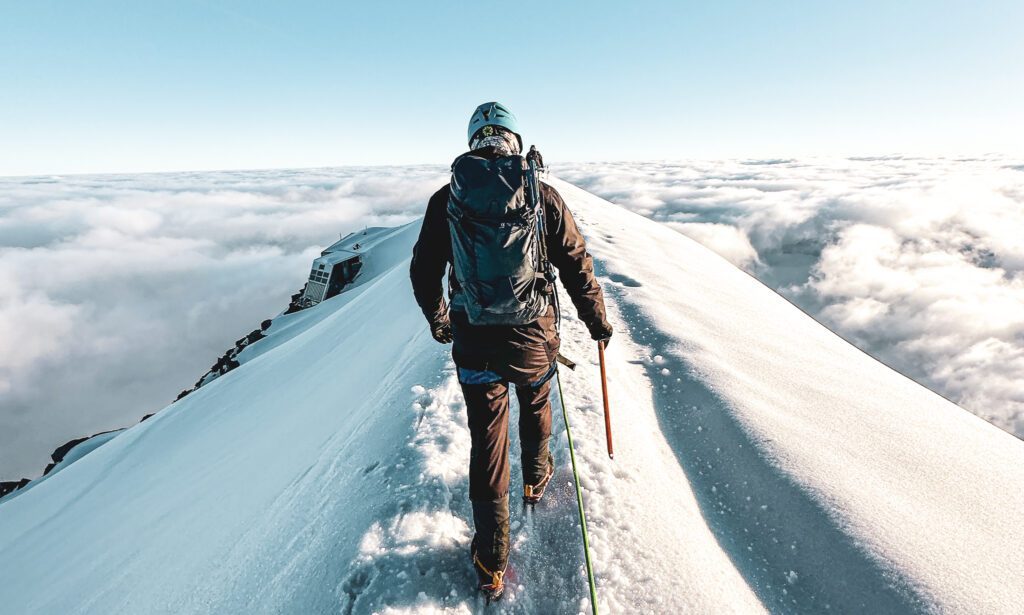
Comparing Mont Blanc to Other Mountains
The Mont Blanc climb difficulty is greater than many well-known peaks because of its combination of altitude, technical terrain, and sustained effort. Here’s how it compares to some other popular climbs:
- Kilimanjaro at 5,895 meters: About 50 percent easier, as it is purely trekking with no ropes or technical sections
- Mount Toubkal at 4,167 meters in winter conditions: About 70 percent easier due to lower altitude and simpler technical terrain
- Mount Rainier at 4,392 meters: About 10 percent easier, with similar glacier travel but slightly less altitude
These comparisons help put Mont Blanc into perspective, showing why it is often the natural next step after achieving summits like Kilimanjaro or Toubkal.
Preparing for Success
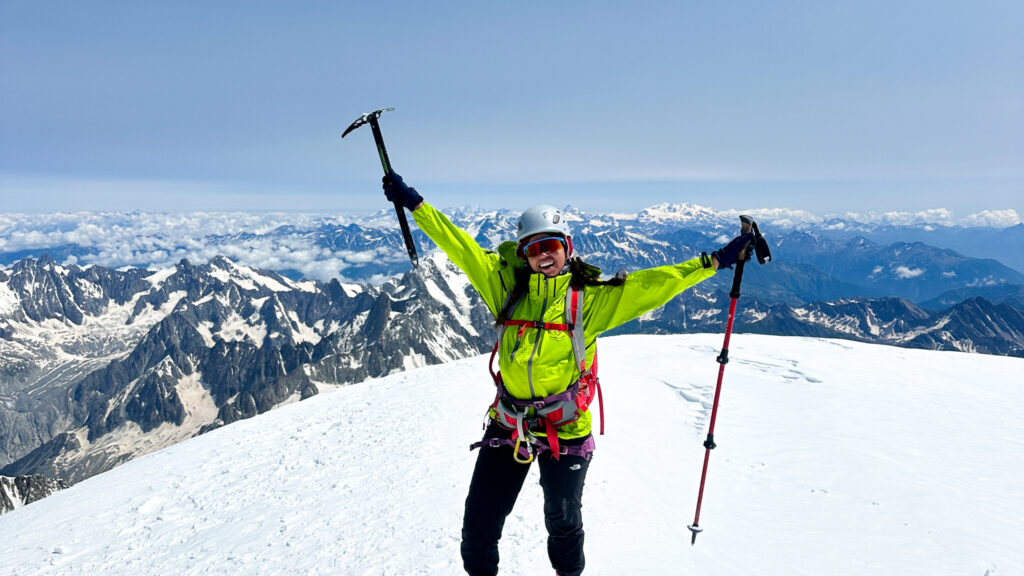
To climb Mont Blanc successfully, preparation goes beyond physical training. Your journey should include strength work for your legs and core, cardiovascular conditioning, and practice with essential mountaineering skills. Summit day will push you to your limits, so arriving in top physical condition is crucial.
A background in rock climbing, even at a beginner level, is incredibly valuable. It builds comfort with exposure, ropes, and harnesses, skills that translate directly to the rocky and exposed sections of Mont Blanc. Time spent on an indoor wall or basic climbing course before your trip will make a meaningful difference to your confidence on the mountain.
Final Thoughts and Next Steps
So, is Mont Blanc hard to climb? The answer is yes. Even on its most accessible route, it is a serious undertaking that requires preparation, resilience, and skill. But with the right guidance and mindset, it is absolutely achievable.
Climbing Mont Blanc is about more than reaching a summit. It is about discovering what you are capable of, sharing the experience with a supportive team, and coming back different.
If Mont Blanc is calling you, book a call with one of our adventure specialists. We will help you determine if this is the right climb for you and guide you through the steps to get ready. With preparation and the right team by your side, you can take on this legendary peak and experience one of the most rewarding journeys of your life.
About The Author
Rami Rasamny is the founder of Life Happens Outdoors, a premium adventure travel community dedicated to transforming lives through curated outdoor experiences. A mountaineer and entrepreneur, Rami has led teams on some of the world’s most challenging peaks, from the Alps to the Himalayas. His mission is to make adventure accessible, transformative, and safe for all who seek to push their limits and Come Back Different.
About Life Happens Outdoors
At Life Happens Outdoors, we believe in the power of nature to transform lives. As proud members of the Adventure Travel Trade Association (ATTA) and the World Travel & Tourism Council (WTTC), our team of certified guides and outdoor professionals is committed to the highest standards of safety, sustainability, and excellence.
Discover more about our story and mission on our Meet LHO page, or explore our curated adventures such as the Tour du Mont Blanc Trek, the Climb of Kilimanjaro, and Chasing the Northern Lights.









